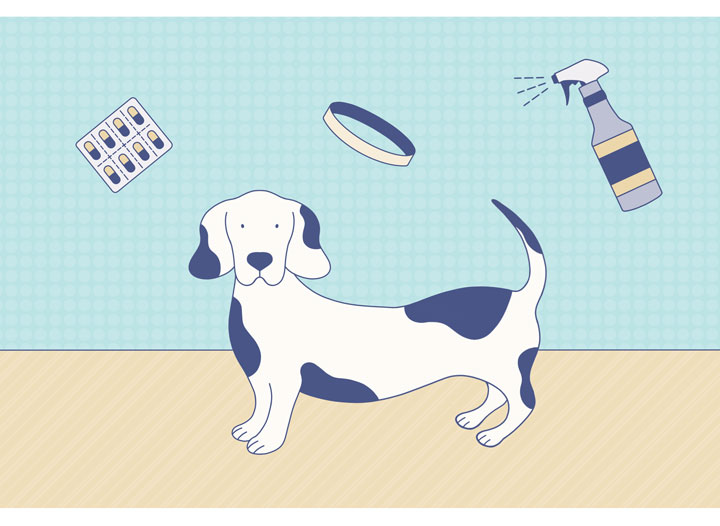It’s best to avoid letting your dog sleep in your bed according to Cesar Millan. Establishing boundaries for your dog’s sleeping habits can help maintain a healthy relationship and prevent behavior issues.
Your furry friend may be irresistible, but allowing them to sleep in your bed can lead to negative behavior patterns and boundary confusion. Cesar Millan, a renowned dog behaviorist, recommends establishing a separate sleeping space for your pet to maintain pack leadership and prevent potential behavioral issues.
We’ll explore the reasons behind Cesar Millan’s advice and provide insights into the benefits of setting clear boundaries for your dog’s sleeping habits. By understanding the impact of this practice on your dog’s behavior and overall well-being, you can make informed decisions for a harmonious relationship with your beloved pet.
Understand Your Dog’s Sleep Needs
Understanding your dog’s sleep needs is essential for their overall well-being. Sleep is crucial for dogs as it helps them recharge, heal, and maintain their physical and mental health. Dogs typically follow a certain sleep pattern, with most spending 50% of their day sleeping, 30% being awake, and 20% being active. Recognizing signs of sleep disturbances in dogs, such as excessive daytime sleeping, restlessness, or constant waking during the night, is crucial. These signs could indicate underlying health issues or discomfort. By understanding the importance of sleep for dogs and paying attention to their sleep patterns and behaviors, you can ensure that your canine companion receives the rest they need for a happy and healthy life.
Harmonious Sleep Routine Tips
When it comes to establishing a bedtime routine, consistency is key. The right way to invite your pet into your bed is by setting clear boundaries and rules from the start. This will help create a harmonious sleeping environment for both you and your dog. Consider making dog-friendly bedroom modifications such as providing a comfortable dog bed or ensuring the room temperature is suitable for your pet. By implementing these tips, you can ensure a peaceful and restful night’s sleep for everyone.
Sharing Your Bed Responsibly
Sharing your bed with your dog can be a bonding experience, but it’s important to establish boundaries. According to Cesar Millan, allowing your dog to sleep in your bed can result in behavioral issues, so it’s essential to set clear rules and create a comfortable sleeping space for your pet.
| Assessing your dog’s behavior and temperament |
| Before allowing your dog to sleep in your bed, observe their behavior and temperament. Consider if they display signs of aggression or possessiveness towards their sleeping area. A dog that is territorial may not be a suitable candidate for bed-sharing. |
| Health considerations for you and your dog |
| Evaluate your dog’s hygiene and health. Dogs with parasites or allergies may not be ideal for bed-sharing. Consider your own health concerns, such as allergies or sleep disturbances, before allowing your dog in your bed. |
| Creating boundaries and personal space |
| If you decide to allow your dog to sleep in your bed, establish clear boundaries and personal space. Provide a designated area for your dog to prevent crowding and respect your own sleeping space. |

Credit: www.mattressclarity.com
Addressing Common Concerns
Many pet owners have concerns about letting their dogs sleep in their beds. To manage dog allergies and hygiene, it’s essential to regularly wash bedding, groom your dog, and ensure they are free from parasites. If your dog snores or moves a lot, consider providing them with their own comfortable bed in your room. This can also help troubleshoot potential disruptions such as interrupted sleep or discomfort caused by a restless dog.
Advantages Of Sleeping Together
Letting your dog sleep in your bed can have emotional benefits for both you and your dog. It can help strengthen the human-animal bond and create a sense of security and comfort for both parties.
Potential Drawbacks To Consider
Letting Your Dog Sleep in Your Bed Cesar Millan
Impact on sleep quality and patterns: Allowing your dog to share your bed can disrupt your sleep patterns and quality. Your dog’s movements and potential for snoring may lead to fragmented or shallow sleep for both you and your canine companion. This can result in fatigue and irritability during the day.
When to reconsider letting your dog in your bed: If you notice a significant decline in your quality of sleep or if your dog’s presence in bed leads to behavioral issues or anxiety, it may be time to reconsider letting your dog sleep in your bed.
Alternatives to sharing your bed with your dog: Providing a comfortable dog bed in your bedroom or a nearby sleeping area, and establishing a routine can help your dog feel secure without disrupting your sleep. You can also spend quality time with your dog before bedtime to promote relaxation.
Training For Bedtime Success
Want your dog to sleep better in your bed? Learn how to train for bedtime success with Cesar Millan’s tips. Establishing a routine and boundaries can help create a calming atmosphere for both you and your furry friend, leading to a more restful night’s sleep for everyone.
| Implementing Cesar Millan’s training tips |
| When allowing your dog to sleep in your bed, it’s crucial to establish a consistent training routine that aligns with Cesar Millan’s principles. Setting clear boundaries and being consistent with reinforcement will help your dog understand the rules. Utilize positive reinforcement strategies to reward desirable behavior and create a positive association with the sleeping arrangement. Additionally, it’s important to be aware of signs of discomfort or anxiety in your dog. Knowing when to seek professional help can ensure the well-being of both you and your pet. By following these guidelines, you can foster a harmonious sleep routine while maintaining a strong and healthy relationship with your dog. |
Keeping The Sleep Environment Clean
Allowing your dog to sleep in your bed can provide comfort and companionship, but it’s essential to maintain a clean sleep environment. Regular grooming and pet care routines, such as brushing and bathing, can help minimize shedding and odors. Additionally, consider using protective covers on your bedding to prevent pet-related damage and make cleaning easier. Following recommended cleaning and maintenance tips, such as frequent washing of bedding and vacuuming the sleeping area, can help keep your sleep environment clean and hygienic for both you and your furry companion.
Frequently Asked Questions On Letting Your Dog Sleep In Your Bed Cesar Millan
Is It Safe For A Dog To Sleep In The Same Bed As Humans?
Yes, it can be safe if your dog is well-behaved, clean, and healthy. It’s important to establish ground rules and boundaries to ensure everyone sleeps well. It can promote bonding and comfort but needs careful consideration.
Can Allowing A Dog To Sleep In Your Bed Lead To Behavior Issues?
Allowing a dog in your bed can create dependency and dominance issues if not properly managed. It’s essential to maintain a balanced and respectful relationship. Clear guidelines and proper training can help prevent behavior problems.
What Are The Benefits Of Letting A Dog Sleep In Your Bed?
Allowing a dog to sleep in the bed can promote feelings of security, comfort, and strengthen the bond between the dog and owner. It can also provide warmth and relaxation for both parties, contributing to emotional well-being and stress relief.
Conclusion
Letting your dog sleep in your bed is a personal choice that comes with both pros and cons. Understanding your dog’s behavior and setting boundaries is crucial. Consider your lifestyle and your dog’s needs. Ultimately, the decision should prioritize your relationship and the well-being of both you and your furry friend.



